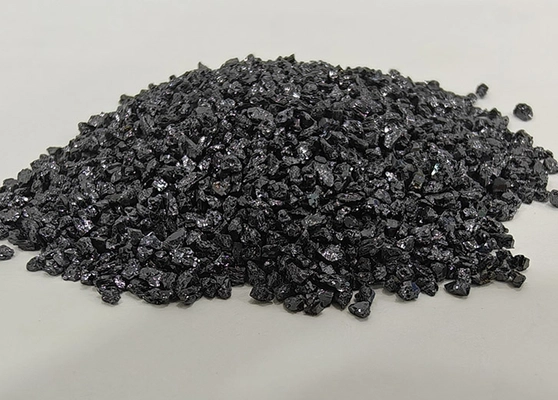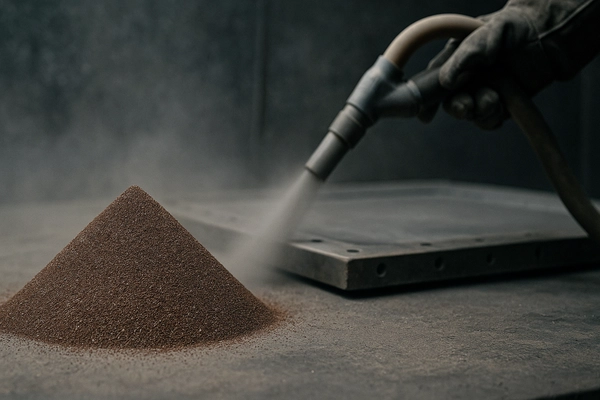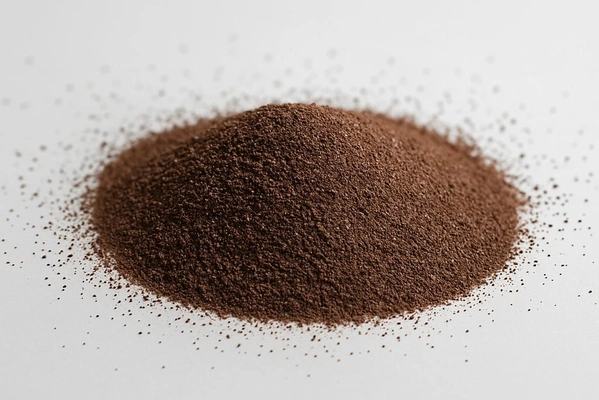Abrasive wheels are essential in metalworking, construction, and manufacturing. They cut, grind, and polish with precision. But here’s the catch—if they’re not tested before use, they can shatter, causing life-threatening accidents. That’s why knowing what test should be performed on abrasive wheels isn’t just helpful; it’s mandatory for workplace safety.
This guide covers the ring test, visual inspection, balance checks, speed tests, and mounting checks—the five most important tests every abrasive wheel must undergo before use. Let’s dive in.
Introduction to Abrasive Wheels
What Are Abrasive Wheels?
Abrasive wheels are cutting or grinding tools made of abrasive grains bonded together. Depending on the task, they can be used for:
- Cutting metals, stone, or concrete
- Grinding surfaces to smooth finishes
- Sharpening tools
- Polishing machinery parts
Common Uses of Abrasive Wheels in Industry
From workshops to construction sites, abrasive wheels are everywhere. Welders use them to cut steel plates, masons to shape concrete blocks, and machinists to finish precision parts. With such widespread use, safety checks are non-negotiable.
Why Testing Abrasive Wheels Is Crucial
Workplace Safety Concerns
An abrasive wheel spinning at thousands of RPM can become a deadly projectile if it breaks. A cracked wheel might look fine but can shatter under stress. Testing prevents accidents.
Compliance with OSHA and International Standards
Organizations like OSHA, ANSI, and ISO mandate wheel testing before mounting. Failing to comply can lead to heavy fines, legal issues, and worse—serious injuries.
Types of Tests for Abrasive Wheels
1. The Ring Test (Sound Test) The ring test is the most well-known safety check for abrasive wheels.
Step-by-Step Procedure of the Ring Test
- Suspend the wheel freely on a finger or small rod.
- Tap it gently with a non-metallic object (e.g., a wooden mallet).
- Listen carefully.
Interpreting the Results of the Ring Test
- A clear metallic “ringing” sound = wheel is safe.
- A dull, thudding sound = the wheel may be cracked and unsafe.
⚠️ Note: This test applies to vitrified bonded wheels, not rubber or resin wheels.
2. Visual Inspection Test
Before any wheel touches a machine, inspect it thoroughly.
Identifying Cracks, Chips, and Defects
- Check for cracks, chips, or uneven surfaces.
- Look for warping or discoloration (a sign of heat damage).
Storage and Handling Checks
- Wheels stored in damp areas may weaken.
- Mishandling can cause hidden fractures.
Measuring Grinding Wheel Thickness
How to Measure Wheel Thickness Accurately
To ensure both performance and safety, it’s important to measure the thickness of your grinding wheel before use. For a quick check, a simple steel ruler or tape measure can work if you’re within standard tolerances. However, for more precise measurements—especially in applications where accuracy is paramount, such as precision tool grinding or in the bearing industry—a vernier caliper or micrometer is recommended.
- Steel ruler: Suitable for basic checks.
- Vernier caliper: Provides greater accuracy for thickness measurements.
- Micrometer: Ideal for critical tolerance environments demanding utmost precision.
Why Thickness Matters
While slight variations in thickness may be acceptable for general tasks, applications like forming grinding or surface finishing require wheels with strict thickness tolerances. An incorrect thickness can lead to poor fitment, uneven grinding, or premature wheel failure—putting both your equipment and operators at risk. That’s why, whether you’re in a busy machine shop or working on-site, always check wheel thickness as part of your safety protocol.
Measuring the Outer Diameter of a Grinding Wheel
Tools and Techniques for Accurate Measurement
To measure a grinding wheel’s outer diameter, use straightforward tools for basic checks—like a steel ruler or tape measure. If you need a higher degree of accuracy (say, for wheels with strict fit requirements), a vernier caliper can come into play alongside a ruler. Always ensure the wheel is removed from the machine and placed on a flat surface before measuring to avoid errors.
Why Does Outer Diameter Matter?
While a small deviation in diameter might not affect everyday grinding, the outer diameter is crucial in situations where precision matters:
- Machine Compatibility: Too large, and the wheel won’t fit inside the safety guard. Too small, and it may underperform or even move around undesirably.
- Production Efficiency: A smaller-than-expected wheel can shorten the operational lifespan and require more frequent replacement, impacting productivity.
- Safety and Quality: Inconsistent sizes make proper wheel dressing difficult and can lead to uneven wear or safety hazards.
Double-check the outer diameter—especially for wheels destined for automated or covered machines—to keep both your workflow and your operators out of hot water.
3. Balance Test
Why Wheel Balancing Matters
An unbalanced wheel causes vibrations, poor cutting, and early machine wear. More importantly, it can dislodge during operation.
How to Perform a Balance Test
Mount the wheel on a balancing arbor and rotate it. If it always rests at the same spot, it’s unbalanced. Use weights or dressing to correct balance.
When Is a Static Balance Test Required?
For most grinding wheels, especially larger ones, static balance isn’t just a good idea—it’s essential. Industry guidelines recommend that any wheel with an outer diameter of 125 mm (about 5 inches) or more, and with a working linear speed of 16 m/s or higher, must undergo a static balance test before use. This includes most straight grinding wheels, but excludes certain types like cylindrical, cup, bowl-shaped, and centerless grinding wheels, which typically don’t require static balancing.
Proper balancing reduces harmful vibrations, improves surface finish, and extends both wheel and machine life. Never skip this step for larger or high-speed wheels—your safety and equipment depend on it.
Rotation Inspection: Who Needs It and Why It Matters
Not all abrasive wheels are created equal—and neither are the tests they require. For larger grinding wheels, especially those with an outer diameter over 150mm, or wheels spinning at working speeds over 50 meters per second and with a diameter above 100mm, rotation inspection is a must.
This test isn’t universal. Smaller wheels and certain specialty types—like cylindrical, pin, or centerless guide wheels—are usually exempt from rotation inspection due to their design and application.
Why perform this check? During rotation inspection, the wheel is spun at its intended speed to detect hidden faults, such as internal cracks or weaknesses, before it goes anywhere near a workpiece. This helps prevent catastrophic failures once the wheel is in service. Always verify the wheel type and specs, and consult safety standards from groups like ANSI or ISO to know whether this test applies to your particular wheel.
Flatness, Roundness, and Cylindricity Requirements
Flatness and Roundness Standards
To ensure safe operation, wheels must meet strict shape tolerances. A properly manufactured abrasive wheel should be:
- Flat within 0.5 mm across the entire face. This means when you place the wheel on a flat surface, it should not rock or have visible gaps.
- Round to a tolerance of 0.3 mm or less, ensuring smooth rotation without excessive vibration.
Cylindricity (Tolerance by Thickness)
Cylindricity—how uniform the wheel is along its thickness—also matters for both safety and performance. Measured in millimeters, the allowable variation depends on the thickness of the wheel:
- If the wheel is up to 50 mm thick: cylindricity must not exceed 0.3 mm.
- For wheels 51–100 mm thick: up to 0.5 mm variation is allowed.
- For wheels 101–250 mm thick: tolerance increases to 0.8 mm.
- For extra-thick wheels over 250 mm: cylindricity should not exceed 1.0 mm.
Adhering to these limits isn’t just a matter of quality—it’s a requirement. Excessive deviation in flatness, roundness, or cylindricity can result in dangerous wheel behavior, including wobble or premature failure. Always verify these measurements before mounting an abrasive wheel.
Parallelism and Coaxiality Tolerances for Grinding Wheel Ends
Precision matters when it comes to abrasive wheels—especially for certain operations where accurate alignment is crucial. That’s where parallelism and coaxiality tolerances come into play.
Understanding Tolerances
Both parallelism and coaxiality tolerances help ensure the ends of the grinding wheel are properly aligned:
- Parallelism tolerance refers to how flat and even the two ends of the wheel are, measured relative to each other.
- Coaxiality tolerance ensures the ends are centered around the same axis, reducing vibration and improving safety.
Typical Tolerance Values (in millimeters)
Here’s a quick breakdown based on the wheel’s outside diameter (D):
- Wheels up to 30 mm:
- Parallelism: 0.2–0.3 mm
- Coaxiality: 0.3 mm
- Wheels over 30 mm and up to 100 mm:
- Parallelism: 0.4 mm
- Coaxiality: 0.4 mm
- Wheels over 100 mm and up to 300 mm:
- Parallelism: 0.4–0.5 mm
- Coaxiality: 0.5 mm
- Wheels over 300 mm and up to 1,000 mm:
- Parallelism: 0.5 mm
- Coaxiality: 0.5 mm
- Wheels over 1,000 mm and up to 2,000 mm:
- Parallelism: 0.3–0.5 mm
- Coaxiality: 0.5 mm
Matching Tolerance to Application
- Tighter tolerances (Group A) are used for critical grinding tasks like centerless grinding, precision profiling, grinding gears, threads, or bearing channels, and when the wheel speed exceeds 50 m/s.
- Standard tolerances (Group B) suffice for general grinding work.
Getting these tolerances right means smoother operation and safer, longer-lasting wheels.
End Face and Radial Runout Tolerances for Specialty Grinding Wheels
When using cup, bowl, or dish-shaped grinding wheels (especially for tool grinding), it’s important to check both the end face and radial (side-to-side) runout. Excessive runout can cause vibration, uneven wear, and imprecise results.
Standard Tolerances by Wheel Size
For these specialty wheels, the commonly accepted maximum runout tolerances—measured in millimeters—are:
- Wheels with an outside diameter over 30 mm up to 100 mm:
- End face: 0.2 mm
- Radial: 0.3 mm
- Over 100 mm up to 300 mm:
- End face: 0.3 mm
- Radial: 0.4 mm
- Over 300 mm up to 500 mm:
- End face: 0.5 mm
- Radial: 0.6 mm
Checking these tolerances with a dial gauge ensures the wheel meets safety and performance standards—don’t skip this step, especially when precision tool work is on the line.
4. Speed Test
Checking Maximum Operating Speed (RPM) Each wheel comes with a rated maximum RPM. Never exceed this limit—it can cause catastrophic failure.
Machine Compatibility Test
Check that the grinder’s speed does not exceed the wheel’s rated speed.
5. Mounting and Flange Test
Ensuring Correct Mounting
Improper mounting leads to wobbling and fractures. Use the right flanges and avoid forcing the wheel onto the spindle.
Flange Integrity Check
Inspect flanges for wear and cracks. Damaged flanges can compromise wheel safety.
Measuring the Basic Dimensions of Grinding Wheels
Tools and Methods for Accurate Measurement
Ensuring a grinding wheel meets proper dimensional standards is more than a box-ticking exercise—it’s critical to both safety and performance. Let’s look at how a few straightforward measurement techniques can keep your operations running smoothly.
Measuring Outer Diameter
The outer diameter is generally checked using a steel ruler or a measuring tape for routine applications. When tighter tolerances are needed—especially for wheels that fit beneath machine guards or serve specialized purposes—a vernier caliper becomes essential. Consistent and precise diameter measurements prevent installation headaches and help maintain efficiency during trimming and use.
Checking Thickness
Thickness might seem like a small detail, but it can make a big difference—particularly in industries like bearing manufacturing where precision is king. For general checks, a steel ruler is sufficient, but for applications demanding higher accuracy, switch to a vernier caliper or even a micrometer. This prevents issues with fitting or uneven wear, especially crucial for forming or profiling wheels.
Assessing Bore (Aperture) Size
If you want an abrasive wheel to stay balanced and secure during high-speed rotation, you can’t overlook the bore. Because the fit needs to be just right—not too tight and not too loose—a limit gauge is the tool of choice here. Using both the “go” and “no-go” ends will confirm whether the wheel meets the upper and lower deviation limits for the aperture. Proper aperture measurement prevents installation woes and helps maintain perfect wheel balance under load.
Accurate measurement, using the right tools—from steel rulers to precision gauges—ensures every grinding wheel fits and functions as designed. It’s another layer of protection, guaranteeing safety and reliability before the wheel ever meets the machine.
Safety Standards and Regulations
OSHA Requirements for Abrasive Wheel Testing
OSHA (Occupational Safety and Health Administration) requires that wheels undergo a ring test before mounting and that machines have protective guards.
ANSI and ISO Guidelines
ANSI B7.1 outlines testing methods and safe operating procedures. ISO 603 & ISO 525 cover wheel dimensions and safety checks.
How Limit Deviations Are Set for Grinding Wheel Dimensions
Just as safety demands thorough functional checks, grinding wheel dimensions must meet strict tolerances to ensure reliable performance. Key measurements—like groove diameter, groove depth, base thickness, ring width, and the thickness around the wheel’s edge—are all regulated by industry standards such as ANSI and ISO.
Groove Diameter Tolerances
The allowable variation in groove diameter depends on the size of the wheel:
- For wheels with a groove diameter up to 120 mm, a small positive deviation is permitted.
- Between 120 mm and 400 mm, the deviation allowance increases slightly.
- For very large wheels above 400 mm in groove diameter, the tolerance becomes even more generous—accommodating manufacturing challenges with bigger wheels.
Groove Depth Specifications
Groove depth tolerances are adapted to wheel type and size:
- Shallow grooves (up to 16 mm deep) have tighter tolerances for critical applications, particularly in gauge grinding wheels.
- As depth increases, the permissible deviation grows—accounting for practical production variations.
- The strictest tolerances apply to specialized wheels (like double-sided concave “No. 2” gauge wheels), while standard wheels have slightly looser benchmarks.
Base Thickness, Ring Width, and Circumferential Surface Tolerances
- The base thickness (E), ring end surface width (W), and circumferential surface thickness (U) each have their own set of limits.
- For instance, thin sections (up to 16 mm) must stay within tighter tolerances to maintain strength and fit, while larger values—typical in cups, bowls, and dish wheels—allow for a bit more leeway.
- Distinct profiles—like cylindrical, convex, or beveled wheels—also influence these tolerances, with each geometry having a recommended deviation to ensure both safety and performance.
Reference to Industry Guidelines
These tolerances aren’t chosen at random; they come directly from ANSI B7.1, ISO 603, and similar global standards, ensuring that wheels from Milwaukee to Makita all meet the minimum safety margins—regardless of where they're made or used.
By following these dimensional guidelines, manufacturers help guarantee that every abrasive wheel, from the smallest cutting disc to the bulkiest grinding bowl, fits securely, spins safely, and lasts as intended.
Request a Quote or Sample
Popular Products

Silicon Carbide Grit Blast Media
View Details
Brown Fused Alumina for Sandblasting
View Details